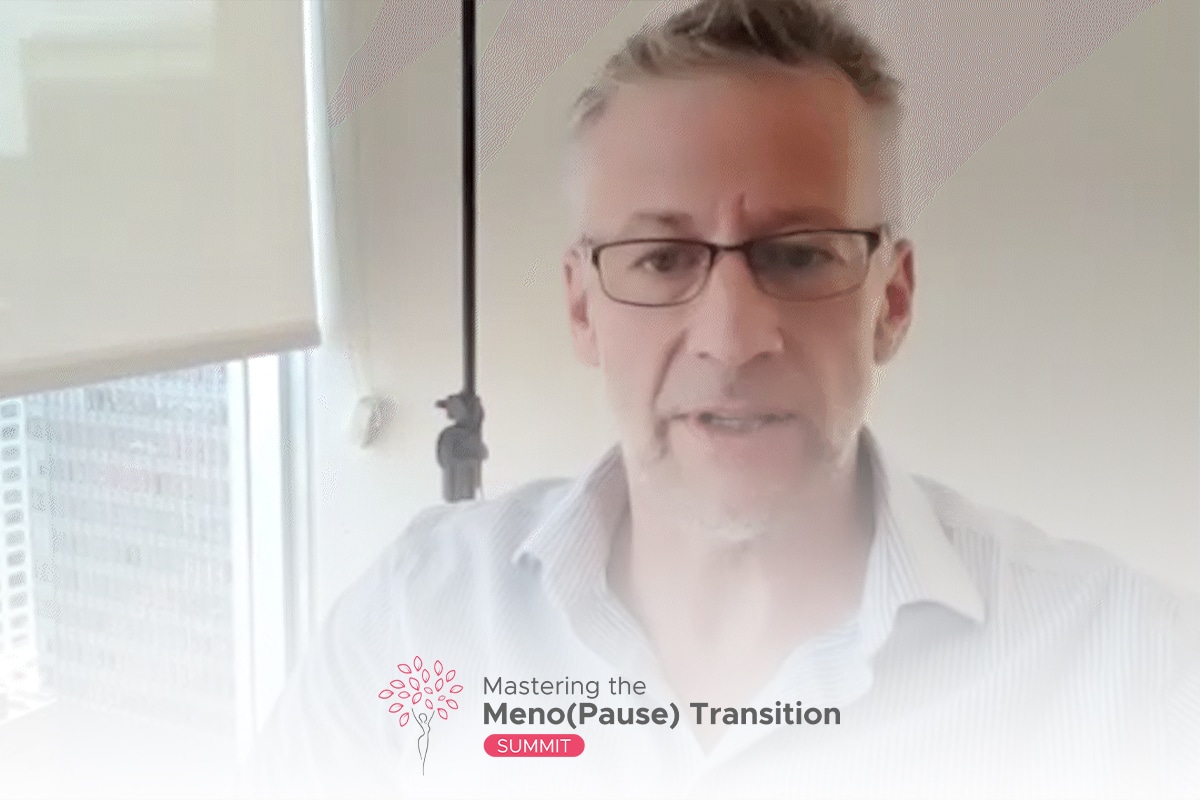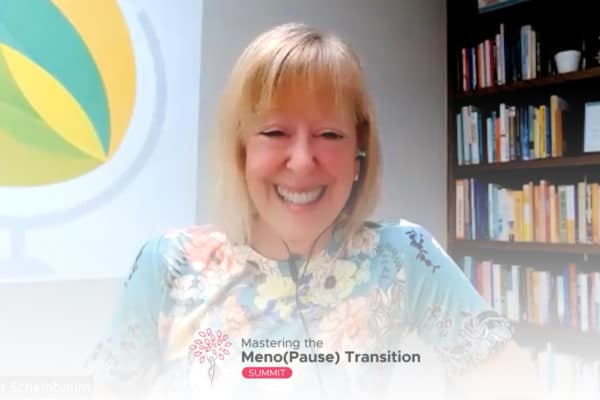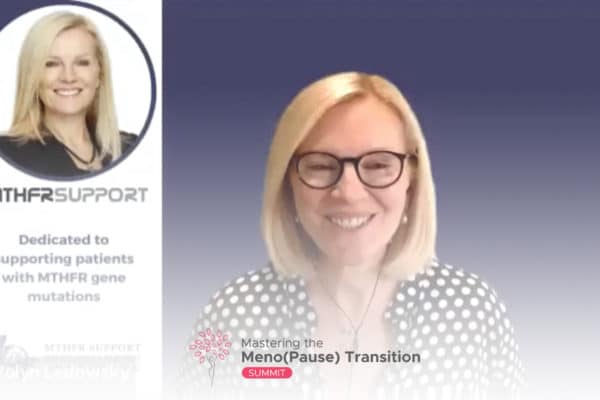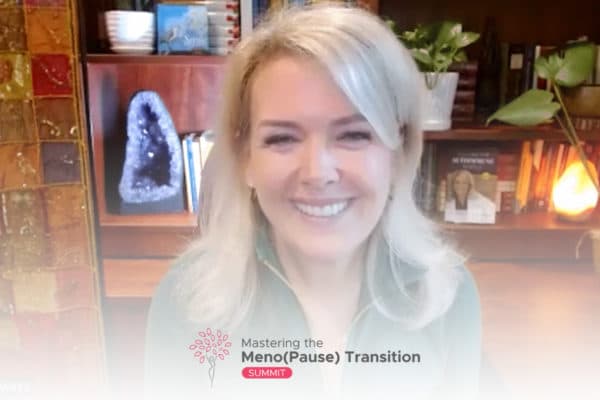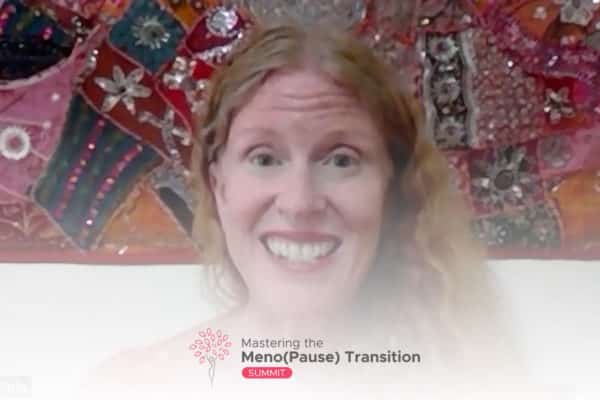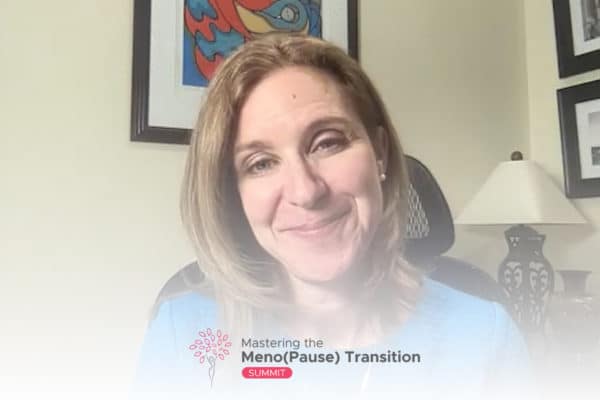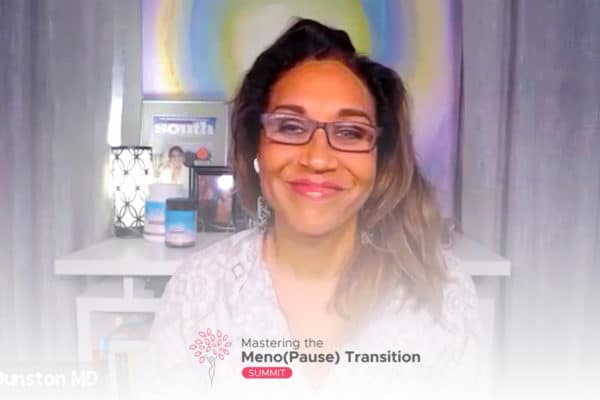Join the discussion below
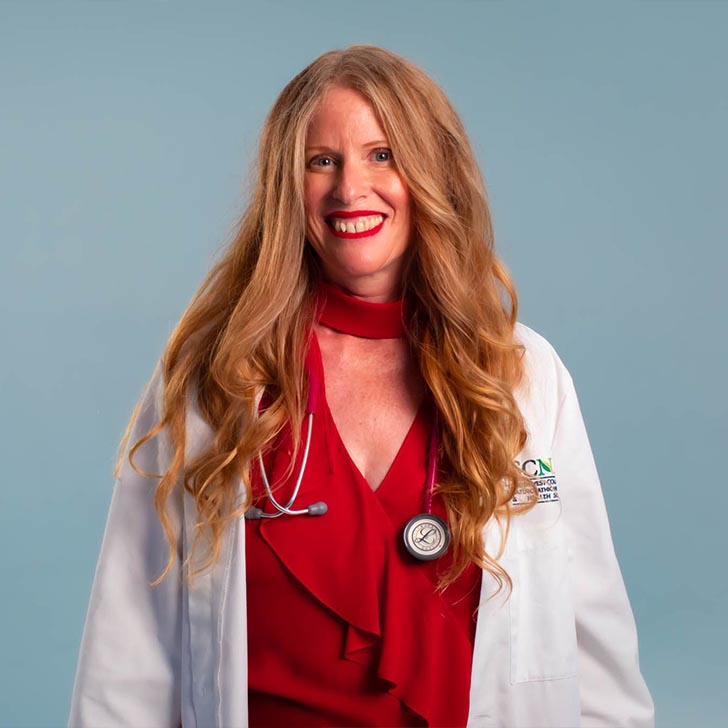
Dr. Sharon Stills, a licensed Naturopathic Medical Doctor with over two decades of dedicated service in transforming women’s health has been a guiding light for perimenopausal and menopausal women, empowering them to reinvent, explore, and rediscover their vitality and zest for life. Her pioneering RED Hot Sexy Meno(pause) Program encapsulates... Read More

Thomas P. Seager, PhD is the CEO and co-Founder of Morozko Forge, which makes the coldest ice bath in the world. The Forge provides clean ice water for the practice of deliberate cold exposure, to restore metabolism and build psychological resilience. Read More
- The epidemic of Industrial Disease that is shortening our quality of lifespan
- Why deliberate cold exposure was critical to our ancient ancestors
- How to use thermal contrast therapy to restore your physiological & psychological balance
Related Topics
Adrenal Response, Cold Exposure, Covid-19, Fear, Health Benefits, Heart Rate, Inflammation, Menopause, Metabolism, Mysteries, Myths, Psychological Resilience, Recovery, Training, Weight Loss, Womens HealthDr. Sharon Stills
Hi ladies, welcome back to Mastering the Menopause Transition summit. I’m your host, Dr. Sharon Stills, a pleasure to be here with you today. I’ve got a fun conversation coming up for you that you initially may be thinking, what the heck does this have to do with my hormones? But you’ve been around here a lot to know that to me, mastering the menopause transition is a wide variety of actions, of lifestyle, of mind shifts, that you are gonna take to live a long, healthy, active, sexy life. And so as a naturopathic physician, one of the most important things in my toolkit that I learned eons ago in med school was hydrotherapy, the use of water to help you heal, alternating water, hot and cold water, just cold water, just hot water. And today I have with me a very special guest who has made his life all about water and cold exposure, and so some of you may have heard of Wim Hof, and you may have been intrigued by that. So I invite you to sit back and relax and learn about water with me. And I couldn’t think of anyone better to have this conversation with, than Thomas P. Seager. He is a PhD and he is the CEO and co-founder of, I forgot to ask him how to pronounce it, Morozko Forge? Did I do?
Thomas P. Seager, PhD
Fine.
Dr. Sharon Stills
Which makes the coldest ice bath in the world. The forge provides clean ice water for the practice of deliberate cold exposure to restore metabolism and build psychological resilience. Something that we are all interested in. So welcome to the summit, Thomas. It’s really nice to have you here. I’m super excited to have this conversation.
Thomas P. Seager, PhD
Thank you, Sharon, it’s a pleasure to be here, and the invite is very generous of you.
Dr. Sharon Stills
Well, I was telling him before we hit record that I have been following him on Instagram. So I’m already a fan, and I’ve been wanting one of your units for my yard. And we both happen to be in Phoenix, Arizona, where right now when we’re recording this, it’s triple digits. So going into a cold bath is not that scary, but I have always, one of the reasons I moved from New York to Arizona was ’cause I couldn’t handle the cold. I literally used to go into my office in New York in the winter, and I would just wear my ski suit. I’d wear it to go shopping at Whole Foods. People thought I was crazy, but I didn’t care ’cause it kept me warm. And so I have always been afraid of doing a cold plunge, but yet I have overcome that fear to really reap the benefits. And so why don’t you just tell us for starters, how did you get involved with making this unit and learning about cold and utilizing it for health purposes?
Thomas P. Seager, PhD
This goes back maybe four or five years. I’m 56 years old now, and when my daughter, who was finishing high school early, you know, she’s getting ready to leave the nest. And you’re probably familiar that people, lives, marriages, families, they’re changing. They go through these different chapters, and it was time for a pivot in my life. And I started reading everything. One of the books was called “Gorilla Mindset” before Mike Cernovich became this big political journalist. He wrote this book called “Gorilla Mindset”, and he said, take cold showers. And it was just what you were saying. You said, well, I couldn’t handle the cold, and I’d gotten over the fear of it. Well, Sharon, it’s not an act of bravery if it doesn’t scare you, you know? So this “Gorilla Mindset” book was like, you need to do the things that scare you. That’s the only way, you know, to build your own courage.
So what was it, November or December? Anyway, it was winter, we’ll call it winter, in Phoenix. And the tap water gets down to high fifties. So I went into the shower and I hated it. I hated every minute of it, but I was determined to, you know, do these difficult things. I was trying to grow and develop as a person. And so I’d be in there like, the hell with you, Mike Cernovich, you know? It was years later that I discovered, there’s this obscure journal called, you know, the Scandinavian Journal of Circumpolar Health or something crazy. But they do these studies in Finland, and one of them compared partial cold water immersion to whole body cold water immersion. What they discover is that the partial immersion increases your heart rate. You get an adrenal response, it’s a stress response, makes sense. But when you go whole body, heart rate goes down, and it’s associated with the diver reflex. Your body is preparing for a different experience when you’re submerged up to your neck, it anticipates that you’ll be going all the way in, diving into the water.
I don’t know what you’re gonna do, hunt for mollusks or something, you know, whatever our ancient ancestors would do in the water. And you need to conserve oxygen is, I mean, this is the biological response. So the cold showers that I were taking were getting me amped up and angry. Well, the tap water gets warmer in Phoenix, all the way up to 90 degrees in the summertime, and the whole cold shower thing wasn’t working anymore. But Jason, a former student of mine, he discovered Wim Hof. There is this Burning Man yoga art group. And so, I mean, this is all before COVID. And he said, Tom, why don’t you come over? We’re gonna do one of these morning yoga and then cold plunge. I’m like, that’s great. We love the whole body.
We love the cold plunge. And as you can imagine, by May or June, we were buying 200 bags of ice, you know, putting it in the tub. Felt like it would last us 15 minutes, you know, and Jason and I are both engineers. So we said, well, we ought to be able to figure this out. You know, I know thermodynamics, I ought be able to figure out refrigeration. Cost me tens of thousands of dollars in spare parts and tools and equipment. We turned Jason’s backyard into a workshop. You would think that like Santa’s elves were gonna descend at any moment, you know, and start making toys or something. And we got it to work, which was great, because now I could do my cold exposure without having to, you know, stop at the Circle K or something and load up on ice. We had a party and somebody wanted to buy one. And so it got in our head that we were never gonna get all the money back that we’d spent on this toy if we didn’t, you know, make ’em and try and make a business out of it.
Nobody was doing anything like this at the time. But we did. I put it up on, it was like a prototype, I put it up on Etsy, and an entrepreneur in San Francisco bought one. He had been looking for this for years. And so did we, because there was no such thing as an ice bath at the time that we created Morozko Forge. Well, one thing led to another and the next thing you know, Jason and his wife, Adrienne are going up to Burning Man, again, before COVID, with a forge. And it was set up in a shipping, they brought ice bath to the playa, and it became this like subculture sensation. We got a email from Ben Greenfield in Spokane, Washington, and he’s a journalist and kind of an entertainer and an athlete. He’s got a hell of a following. And he said, you know, I’ve been looking for an ice bath and I’m finishing my book “Boundless”, could you tell me about yours? And so we didn’t had no idea how this whole affiliate marketing and how, you know, Instagram worked. Me and my 950 followers, thank you very much. That’s S E A G E R TP. Right?
And so we said, well, okay, Ben, you know, we’ll send you a forge, and you know, you can see how it works for yourself. By that time, it was like November, his book was going to press, the forge hadn’t even arrived. And when it did, he’s in Spokane, Washington, he wasn’t sure what, frozen solid, like 20 inches of ice. He couldn’t even get in it, but he believed in cold exposure so much that he put us in his book anyway. And when the book came out, his forge thawed out so he could get in it. It was by that time, you know, March of 2020, April of 2020, and COVID hit and everything changed. And people got very concerned about taking responsibility for their own health, and they wanted home equipment to do that.
We were overwhelmed with orders. It was really the beginning of Morozko Forge as a real company, instead of a backyard hobby for Jason and Adrienne and I, and we have done so much work on the business, so much research on the benefits of cold exposure. I’m gonna plug one thing, On our website there is an article that I published a couple or three weeks ago, and I think it’s called “Myths, Facts, and Mysteries About Cold Exposure”. There are a number of misconceptions that are circulating, you know, Google search, on the web. We are hard to find via Google, we don’t advertise. You know, we’re not search engine optimized, but your listeners who make it through, you know, 45 minutes talking about ice baths, which is a miserable experience, your listeners may want to go to that article, look us up at Morozkoforge.com, click the ice bath science and find this, “Myths, Facts and Mysteries”, because it’s gonna clarify a lot of the misconceptions and say what’s true, and you know, what’s folk tale.
Dr. Sharon Stills
Can you speak to that? Give us some, give us some examples. You know, what are the facts?
Thomas P. Seager, PhD
Many people that we met had experience with ice baths from being high school or college athletes. And I’d expect some of your audience would too, whether it’s track, or running, or it could be volleyball, or basketball, which is really hard on the knees. And so they were taught in high school to use ice to reduce inflammation and speed recovery. So there are two approaches. There are those people who say, oh, it’s the best thing. And those who people say, no, it’s a bunch of crap. The truth is that if you’re in the middle of a multi-day performance, a tournament, I’m not sure, if you happen to find yourself in the middle of the Tour de France, you know, then the ice bath will bring you back to performance level faster. It will help reduce the inflammation, repair the injury inside your muscles and your joints, and get you back on your bicycle or back on your, you know, in your jogging, shoot, whatever it is, a lot faster, but that comes at the expense of long term gains.
If we are training, do not use ice to recover from your workout because you gotta wait at least three or four hours, allow your body to respond to the micro tears and the injuries that are part of your workout. Let your body do its work to rebuild before you do, I mean, and that takes hours. I would even suggest sleep on it. Allow your body to rebuild overnight, then do your ice bath. So what we recommend is pre-cool your workout. And I discovered this quite accidentally. Do the ice bath before you do the exercise. There’s a lot of reasons why, and some of them are in that article, but you were asking for an example. And so both sides of the argument, the people who say, oh, ice baths for recovery are great. They are, if what you’re going for is a short term recovery so you can perform, Oh, ice baths for recovery are terrible. They are, if what you’re going for is longer term games because you’re in a training mode. And who’s gonna sort that out? I mean, it took me months, you know?
Dr. Sharon Stills
So for women listening, what are health benefits for someone who’s not a professional athlete, but you know, we’re on our hormonal journey. We’re going through menopause, and we just want to have good health and age gracefully and have clarity. And how does the ice bath fit into that? How does cold exposure help?
Thomas P. Seager, PhD
There are two dimensions, the physiological and the psychological. I’m gonna talk about the physiological first. One of the myths is that ice baths are gonna help you lose weight. And it is true that ice baths will activate your brown fat. They will clear glucose from your bloodstream. They will increase your insulin sensitivity. You can reverse type two diabetes, ten days of deliberate cold exposure, no exercise, no changes in the diet. I’ve got a really good study out of Germany on this. Because the cold exposure does so much for your brown fat, improve your insulin sensitivity, that without any other changes, your type two diabetes will be resolved. All that’s great. What it will not do is help you lose weight, even though you’re burning fat while you’re in the ice bath. And this has been very well documented. There are compensatory metabolic processes. One of the reasons that the ice bath helps you sleep is because it lowers your core or basal body temperature while you’re sleeping. And this helps your brain.
This helps you sleep. It also reduces your metabolism. So even though you’re all psyched up about the ice bath that you took, and you’ve done great things for your blood sugar and great things for your metabolic health, and you have burned fat, your body will compensate later in the evening, especially you get a great night’s sleep, but you didn’t burn any extra calories. Most people, although they say they wanna lose weight and they probably should, I mean, I’m one of them. What we’re really concerned about is body composition. It is not the weight, it’s not even the BMI. It is what is the composition of your body that is important. And here ice baths can help. If ice bath were gonna help you lose weight, then wouldn’t there be, you know, Instagram models or something like that.
Wouldn’t we see before and after pictures, and you know, here I was, I was 250 pounds- I weigh 250 pounds, and here I am, and now I weigh 190, and you know how I did it, it was ice? There’s none of those. Those pictures exist for keto. Those pictures exist for, you know, intensive exercise program. Those pictures do not exist for people who are doing ice baths. And there’s a reason. Ice baths are a route to metabolic health, but they are not- and they are a good route to improving your body composition, but they’re not for losing weight. Diet is gonna help you lose weight. So that that’s one of the physiological things. But let’s talk about.
Dr. Sharon Stills
It’s kinda a bummer, but that’s really fascinating about type two diabetes. I wasn’t aware of that.
Thomas P. Seager, PhD
It’s extraordinary. We have a case study on our website, and ostensibly, you know, the headline is about cats. Cats are obligate carnivores, but the cat food that you buy in the store is all full of soybean meal and corn flour. So when you feed your cat dry cat food, you are shocking their metabolic system with too many carbohydrates. So the canned food, the carnivorous food is better for the cats. Well, there’s a case study on our website of a woman. She’s a former model, she struggled with anorexia. She’s six foot one and 130 pounds. As a doctor, you can appreciate, she was at 12% body fat and suffering from body dysmorphia, as many anorexics do. She resolved her type two diabetes. Imagine someone that thin with an HPA A1C of 7.2, it was extraordinary. She resolved her diabetes by eliminating the most of the liquid carbohydrates, getting the fruit juice and the soda out of her diet, starting ice bath practice and improving her exercise. When she saw her cats were topping out at 20 pounds, she made a connection.
She said, wait a second. This is how I fixed my metabolism. And she did not need to lose weight. As a matter of fact, she needed to gain, and she did. But when she saw her cats, she said, if this is the way my body is responding to the change in my environment and in my diet, and I’ve resolved my type two diabetes, what am I doing to my cats? So she wrote this article about cats are obligate carnivores, do not put your cat in the ice bath. That’s not what we’re talking about here. And in the middle of the article is this wonderful case study of her resolving, her doctor was about to put her on insulin, which would’ve been the worst thing for her. It would’ve made her metabolism worse. And instead she changed her diet, she started an ice bath practice, she started doing yoga and she went from 7.2 down to like the 5.0 ,4.9, where she really ought to be.
You would think that’s a medical miracle, except it’s happening over and over again. We’ve got some good continuous glucose monitoring data on what happens to people who are insulin resistant when they begin an ice bath practice. So you might have members of your audience, who they feel, oh, my hormones are changing. My metabolism is changing, hypothyroidism and thyroid disorders are a big one. Ice baths correct that. The thyroid signals the metabolism. So now the question is what signals the thyroid? When you told me that you couldn’t tolerate the cold, I was thinking uh oh, Sharon’s lost all her brown fat, because the only way to recruit and maintain brown fat into adulthood is cold exposure. Adrienne, Jason’s wife, who co-founded Morozko Forge, she grew up in Florida.
She moved to Arizona, she was never cold and she couldn’t stand the cold. And we didn’t even know brown fat was a thing until about ten or 11 years ago when the advanced PET scans started picking it up. Well, now we know that adults who don’t experience regular cold exposure have no brown fat. Ben Bickman, he was on Instagram. He wrote a great book called “Why We Get Sick”. It’s all about insulin resistance. And Ben did a little monologue on Instagram about how it is brown fat that produces thyroid hormone. Oh, so if we don’t have brown fat, because we don’t have cold exposure, now we don’t have thyroid, and now our thyroid is all dysregulated. So I go to the library and sure enough, there are people who tragically have had thyroidectomies because there’s such a thing as thyroid cancer.
They remove the thyroid and then they study the bloodstream. In this study, they were looking for thyroid stimulating hormone, and sure enough, they got this great correlation between the amount of brown fat. There’s no thyroid in their body, but the brown fat was still producing thyroid stimulating hormone as if they still had a thyroid. And it matched right there with what Ben Bickman was saying. When your thyroid is dysregulated, there are things you can do with diet, and they’re gonna help, but you’re gonna go to your doctor, not you Sharon, but an allopathic medical doctor will say, you’re gonna be on these prescriptions for the rest of your life. It’s not true. Because thyroid disorders can be corrected when you stimulate, activate and recruit new brown fat using cold exposure.
Dr. Sharon Stills
You have our attention, this is amazing.
Thomas P. Seager, PhD
Oh good.
Dr. Sharon Stills
Yeah, this is fantastic. So we’ve got type two diabetes, we’ve got hypothyroidism. Are there any other medical conditions that cold exposure will help with?
Thomas P. Seager, PhD
There are, and it’s because something like eight out of the ten leading causes of death in the United States, not medical errors, but some eight out of ten of these can be traced back to metabolic disorders. So as you know, there’s something called metabolic syndrome. It amounts to insulin resistance, which sometimes, you’ll hear it from your doctor as prediabetes. Prediabetes, it’s a vague general unhelpful term. Insulin resistance is prediabetes. And so now, you know, maybe you don’t have your full on type two, but the insulin resistance is the source of cardiovascular disorders. Unfortunately, some 80% of tumor cells feed exclusively off of glucose. So it puts you at increased risk for cancer, and it is the precursor to cardiovascular disease.
So it is almost unbelievable, the risk profiles and the way they improve when you’re taking care of your metabolism. A lot of people have trouble going low carb, going into keto, getting enough exercise. These lifestyle changes, they’ve been very difficult for people to implement, but you give me 11 minutes a week and I’ll put brown fat on your body with an ice bath. It will stabilize your blood glucose levels. It will fix your metabolic disorder. It will lower all of these systemic risks that cause premature death in America. Now you’re not gonna like it. I mean, it could be 11 miserable minutes, but we will talk about the psychological effects when we wrap up the physiological.
Dr. Sharon Stills
Okay, so how does that 11 minutes break down? Is that like?
Thomas P. Seager, PhD
Well, right now we don’t know. What I’m doing is I’m quoting a study from Denmark. There’s a woman there, she’s a PhD. And she recently published this study in cell. She gathered so much data like you wouldn’t believe. It is the most exhaustive repository of data on brown fat in human subjects that I’ve ever seen. Her name is Susanna, I’m gonna mix this, Søberg, you gotta stick a potato in your mouth to pronounce Danish correctly. So the English version would be like, Søberg but if you ever go to Denmark and you say that they’re gonna be okay, you know nothing, and I don’t wanna mess it up, so I’m trying. But Susanna Søberg, and it’s a great study.
What she did was compare Dane’s who practice winter swimming. And it’s pretty cold in the fjord in Denmark. You know, they measure it in degrees Celsius, but upper thirties, lower forties, it can get even colder because she’s been winter swimming and posting the temperatures. She says 11 minutes, because when they surveyed the Danish winter swimmers, the average was 11 minutes. And when they assayed them for brown fat, they all had higher levels of brown fat. She knows, and it doesn’t matter how you get it, one, you know, and a half minutes, seven days a week, we’ll do it. Five minutes one day, you know, three minutes the next day and three minutes, another day, that’ll do it. And because the sample that she had, these winter swimmers, their practices were really all over the place. It was kind of random. We don’t know how to optimize your cold exposure or whether it really makes a difference. What we do know is 11 minutes will get you the brown fat. You might be able to do it in less, but we haven’t done the next study to show that.
Dr. Sharon Stills
So when I get a machine from you and put it in my backyard, what are you gonna, ’cause I wanna build my brown fat. So what are you gonna recommend that I- are you gonna recommend I go in it every morning, like for the listeners, like what’s kind of practical? What should we expect?
Thomas P. Seager, PhD
You’re gonna wanna go in it every morning. I’ll tell you why. I’m not gonna use the word addiction. I have too much experience with that to misuse the word. However, you might feel a compulsion, because your body will become habituated to the dopamine reaction that you get. And it’s like three, four times the levels of dopamine, you know that’s the pleasure hormone. And we love that feeling. So you might find yourself craving the ice bath, and you will want to practice every day. I do, sometimes, I mean Phoenix in the summer and it’s 116 degrees Fahrenheit out, sometimes I’ll do two. However, in the winter it’s tough. So what I say is two to four minutes, maybe five times a week. And you can see how, if all you’re doing is two minutes and you’re getting five times, it gets you really close to that 11 minute threshold. There’s gonna be days when you miss, traveling is the worst for me because I don’t have my forge and then I’ll come back. When I came back from Quantico, you know, I was at this conference, and I was giving a talk and I was very jazzed about it because it’s an academic conference.
And I’m like, oh, imagine, the Navy wants to hear from me, you know? But it had been five days without my forge. And boy, it was tough. I wanted to do it. But those first 15 seconds were really difficult. We breathe, we have a whole method. So what would I recommend when you get your forge? Even if it’s just 30 seconds, you know, you can kind of psych yourself out when you’re starting and say, I’m just gonna go in, I’m gonna go in real quick. The most difficult thing is the first 15 seconds because you’ll experience the gasp reflect. You will experience as you go deeper, the dive reflex, and these two, there’s something called autonomic conflict. One is saying, pump yourself up, especially as you first get in. And the other is saying, calm yourself down. Something neurologically is activating your fight or flight response. This is the autonomic sympathetic nervous system. And every cell in your body, Sharon, is gonna be trying to tell you that you are gonna die when you first get in. And that’s when your brain has to take over. And your brain says, this is what cold feels like. That’s our mantra. You’re talking back to your cells and you say, this is not death.
This is what cold feels like. And after you get through those 30 seconds, this is why I say, just tell yourself, I’m gonna do 30 seconds. After you get through that, we’ve got some really good data on brainwaves. It’s backed up by what’s in the literature on heart rate. You go down into a meditative brainwave state and you stay there. I suck at meditation. Like if I gotta find my keys or something, you know, I would go, okay, I’m gonna meditate. And then all these crazy thoughts go through my mind. And in a way, meditation is helpful, but I can’t quiet my mind, I’m terrible at it. So we took a woman who’s a trainer, we’ve done a guy who teaches improv theater. He’s a theater director, he’s got a lot of meditation experience. And we’ve done some other people, just kind of random walks of life. And we’ve measured their brainwaves, dry land, you know, and then wet, cold. And you would think, who could possibly meditate while they’re in an ice bath, but it’s not what happens. It’s involuntary.
The dopamine reaction, the norepinephrine reaction, the sympathetic response of your body activates you at first. And you think that you’re having one, but your brain response in this counterintuitive way, it goes down into a meditative state, and you get the benefits of the meditation without, you know, 20 years of monastic training to be able to put yourself there. So that’s some of what’s happening on the psychological side. We advocate not cold exposure so much for exercise recovery, but for management of stress. Once you’ve come out of the ice bath and you’ve, you know, been in this conversation with the cells of your body, and you’ve talked them down off the ledge, so to speak, and you’ve said, this is what cold feels like. I’m feeling cold now, and I’m okay with that. And you come out and you feel euphoria. It feels like you’ve cheated death. And then you go through the rest of your day and nothing bad can happen to you. You know, somebody cuts you off on the Ten? You don’t care, you just survived death. You feel so much more brave that you can keep that, you can maintain that calm feeling for hours because you’re victorious.
Dr. Sharon Stills
Yeah, I can testify to that when I did my first ice bath, so I go to Germany every year to study and take physicians over to learn European biological medicine. And we always go to the Friedrich Spa, which is old time water sanitarium. And at the end they have the cold plunge and I have always been afraid of it. And I like run in and I scream and I run out and it’s like a whole mess. And I see my friend in there just meditating. And I’m like, how do you do that? So when I did my first training in Wim Hof, and did a cold ice bath, I was terrified to go in the cold water. But it’s kind of like when I have patients who are terrified of getting their blood drawn, and I’m like, trust me, the fear you’re experiencing now is so much more worse than what’s gonna actually happen when I stick the needle in your arm. And so that was my experience with the cold, the stress and the fear I put myself through about going in the bath when I finally got in it, yes, I had that first 15 seconds of sympathetic. But once I settled down, and I am a experienced meditator, and believe very much in meditation, once I settled into that, it was just like so peaceful and so meditative. And instead of going in with the crazy screaming, just focusing and breathing, helped guide me through that process.
Thomas P. Seager, PhD
You’ve got it, you’re doing it right. So you’ll be able to put yourself in that mental state, the more you practice it, just psychologically. You won’t need the stimulation of the cold after you’ve practiced it, you’ll be able to activate it inside yourself. And that comes in handy for me when I’m negotiating or when I’m activated, because I’m being, I don’t know, criticized on Twitter or something like that. You know, it helps me to remember that can flip that switch. I can, the mantra that I use in my forge, this is what cold feels like, will create the same psychological response when I feel like I’m being attacked. It activates the same fight or flight, and I can say I mean, it’s kind of weird, but this is what cold feels like. It’s not cold, I’m not in the ice bath, but I’ve already become attuned to the mantra. And then I remember to breathe. You can’t get in a fight. You know, you can’t yell at somebody while you’re breathing. And so brings me back to my rational self.
Dr. Sharon Stills
And that is so mindful, the way you say it, of saying, this is what cold feels like. That’s what I always teach patients when it’s comes to being mindful. We’re just identifying, when you have a headache, this is what my headache feels like. This is the color of it, this is the temperature of it. So that’s such a good way to explain it. So for women listening, who are suffering with anxiety, depression, fatigue, low libido, insomnia, how will the ice bath help with those types of issues?
Thomas P. Seager, PhD
Okay, you went through a lot of issues, and I’m trying to remember them in reverse order, insomnia, libido, anxiety, were all in there. Let’s talk about anxiety first. Victor Frankel wrote a great book called “Man’s Search For Meaning”. And it was the first time I encountered this phrase, anticipatory anxiety. Anxiety is not the state of fear. You know, fear is, oh my God, I’m about to get, you know, hit by a bear. Fear is a logical, rational, self protective response to something happening in the present moment. Anxiety is when you are worrying about the thing that isn’t happening, it’s only happening in your imagination. So this is what I came away from. Victor Frankel’s phrase, anticipatory anxiety. My daughter’s got a calculus final and she worries about it all day. She’s not in the exam, but somehow she’s afraid that she’s gonna go fail the exam. Now I’m not saying I did a good job raising my daughter, ’cause she’s a little foul mouthed, but I remember her calculus final day. And I said, you know, Emma, would you do something or other?
And she said, dad, yes, I will get to your request as soon as I go finish fucking up my calculus test and then, I’ll do it. She prepared herself, she took the anxiety away by imagining kind of this worst possible outcome, resigning herself to that and saying, it’s gonna be fine. She got a B. I was so proud. She’s a great student, it was her only B. But in a way it was an achievement because she learned to deal with her anticipatory anxiety. I experience the exact same thing when I’m staring down at my forge and I see huge chunks of ice, you know, floating around the top. This still happens to me. I wrote an article that said set your forge to a temperature that frightens you because it’s not an act of bravery if you’re not scared. And then I relax, and I remember my daughter. I don’t expect me to be perfect. And sometimes I will say to myself exactly these words, here’s what’s going to happen. When I say here’s what’s going to happen, it’s like I become locked in on the thing that I was anxious about.
There are now no other alternatives. I have hypnotized myself. So I might say, here’s what’s gonna happen. I’m gonna put in a toe. The toe is gonna feel cold. I’m gonna step all the way in, and I’m gonna experience the gasp reflex. I’m gonna sink down into my armpits and I’m gonna hate every second of it. I’m gonna remember to breathe. And then I’m gonna decide if I want to get out or stay in. I create this screenplay in my mind of here’s what’s gonna happen. And I learned that, both by reading Victor Frankel’s book and talking to my daughter. She’d say, well, here’s what’s gonna happen. I’m gonna walk into that calc test that I prepared for, that I’ve studied for, and I’m gonna fail it. I’m gonna see that grade show up on my transcript. And then I’m gonna decide if I want to take the class over again or not. Anxiety disappears. When we practice this sort of, this here’s what’s gonna happen self hypnosis in the forge, we can transfer it to any other aspect.
You got a meeting with your accountant in which, I mean, I don’t know Sharon, which she says, no, no, you misunderstood depreciation. And now you’re gonna owe the IRS 22,000 more dollars. That’s something I would be anxious about. Here’s what’s gonna happen. And the anxiety goes way down, and it puts you in a position of saying, I’m gonna go up to this point, and then I’m gonna make a decision based upon the experience I just had. So that’s one. Libido. This was a surprising finding that if you do your ice bath before your exercise testosterone goes through the roof. Now before the ladies get to, you know, well, I don’t want to grow a beard, we’ve only studied this in men.
So I don’t really know how it applies to women. And I don’t know what through the roof means for women, but I was going through this thing. I was getting all my blood work done. I’m like, okay, I’m gonna be in this health and wellness thing. And I gotta get a baseline blood work. Blood work came back fine, except for one thing, a big red exclamation mark next to my prostate specific antigen. So if there’s any men in your audience at all, PSA is a thing that might be part of their routine blood work, and it’s not definitive, but it’s a marker that is correlated with increased risk of prostate cancer. I got concern. So I started talking to men about prostate health and it was sounded terrible. I decided I was gonna see if I could bring my PSA down with ice baths and keto, going in and out of ketosis. The ice bath is great for that, fastest way to stimulate endogenous ketone production is an ice bath. Well, sure enough nine months later, my PSI had gone from over seven to under one, I was at 0.8. Isn’t that wonderful? But something else jumped out of my labs. Now the big red exclamation mark was next to free and total testosterone. What the heck? I went to my urologist, and you know, I mentioned, I’m in my mid fifties at the time. And my urologist, he thought I must have been juicing, like using a cream or something. And he didn’t come right out and accuse me of that. He said, mm, Tom, let’s do another test. We’re gonna test you for luteinizing hormone.
I had to look it up, metabolic precursor to testosterone. So if my LH is also high, it suggests that I’m endogenously naturally producing this. And we were talking like the levels of an over sexed 19 year old. And luteinizing hormone came back with a red exclamation mark, way too high. It was as if I had these teenage testosterone levels. I had to go to the library. I mean, not literally, but you know, go online and read the journal articles. And sure enough, there was a 1991 study of these Japanese college students when they did exercise and then in ice bath for recovery, testosterone went way down, not good for body composition, not good for muscle development.
When they did an ice bath, and then exercise to recover from the cold. You know, when they did it in the other order, luteinizing hormone and testosterone went way up, and I was like, that’s it. Because here I was, I had my prostate scare. I was doing more ice baths than ever. I would come out, I’d be so cold and I’d be, you know, jumping jacks and pushups and I’d get my steel mace out and stuff. So I would get, it doesn’t even take 20 minutes, just a few minutes of exercise to restore the circulation to my fingertips- so I thought. But I was having this huge hormonal benefit as well. Well, for men, you know, this is great because you can maintain high testosterone levels well into middle age, but I’ve got a lot of questions about what it does for women. And so far, I mean, the only answer is, well, it’s great for ladies when their men have higher testosterone levels.
Dr. Sharon Stills
I was gonna say that. Might be a lot of ladies watching, but a lot of them have partners who, you know, for good health, we have to both be healthy if we’re in a relationship. And my experience is that prostate issues, contrary to popular belief, are from low testosterone, not too much testosterone. So I actually treat prostate cancer with testosterone.
Thomas P. Seager, PhD
No kidding, okay. One of the things that we can do with your patients is experiment with this endogenous method because it’s been repeated. Jason did the same thing. He measures his testosterone on his birthday every year. And he’s up into the mid nine hundreds. He’s almost at a thousand. I peaked out over a thousand, but you know, testosterone goes up and down seasonally and throughout the day. Since, there’s been more studies. Studies on, you know, Italian rugby players, and it seems really obscure, but testosterone supplementation is a huge industry. It’s full of charlatans. And when we find something that is rooted in the science and repeatable in men, as old as I am, we want to shout it from the rooftops, and say, try it for yourself and see if it works.
Dr. Sharon Stills
Fantastic.
Thomas P. Seager, PhD
Shows up in women. It will be harder to detect, because the testosterone levels are so low, but testosterone also feeds the libido in women as well. So it might be, if there’s a woman struggling with libido, it could be her relationship. Every relationship I’ve been in, women are more responsive than men. That is, they might not feel desire until it’s stimulated in them, so that could be one thing. It also could be, low T is a thing for women too. It’s just that nobody talks about it.
Dr. Sharon Stills
Oh, we do in my practice, that’s for sure.
Thomas P. Seager, PhD
No way.
Dr. Sharon Stills
Testosterone for women is so important, not just for a sex drive, but for muscle, and for anxiety and for blood sugar. I mean, there’s so many different.
Thomas P. Seager, PhD
Bone health, maintaining body composition. Yup, I agree. It’s too overlooked because it’s associated- testosterone gets a bad name. It’s associated with steroids and bodybuilders and hyper masculinity. And people don’t realize that in women, it’s supposed to be in balance, and they’re subject to many of the same environmental insults, whether it’s diet or pollution that men are. Even though it’s more difficult to detect, yes. There are millions of women with low T and not even asking the question of their doctors like you are.
Dr. Sharon Stills
Yes well, around here we are very familiar and we know that hormones are a symphony, just like men have estrogen and progesterone. It’s just, we have them in different ratios. And it’s all of that about finding the balance. So before we finish, ’cause I’m like ready to get my ice bath, but are there contraindications for, are there some people listening who it’s like, you might think it sounds great and wanna get out, run out and get one, but it’s not a good idea for you?
Thomas P. Seager, PhD
The autonomic conflict that I talked about earlier, it scares a lot of people. If they have a heart condition, if they have a heartbeat irregularity, the idea of entering autonomic conflict, I mean, it’s frightening. So we wrote an article. We’re the only ice bath or cold plunge company in the world to do this. And it’s called “The Dangers of Ice Bath”, or “The Dangers of Deliberate Cold Exposure”. There are three that people talk about or you can read about on Wikipedia. And the first one that’s obvious is hypothermia. Hypothermia is not a danger. It takes more than 30 minutes for your core body temperature to reach a medical definition of hypothermia. Yes, you get cold. Yes, your skin gets cold. Yes, a lot of things happen- it’s not hypothermia. And it turns out that excessive heat is way more dangerous than excessive cold. The world record for being immersed up to your neck in ice cubes is like 122 minutes. And those guys recovered fine. I’m not worried about hypothermia because you’re not gonna be in there for 45 minutes.
I was reading Kelly McGonigal’s “The Upside of Stress” and it’s a wonderful book. And in there she said two minutes, some freezing cold water can kill you. I’m still here, I’ve done 22 minutes. She’s just wrong about that. So this is a myth, okay. The second one that people overlook is drowning. Look, anytime you’re in the bath, drowning is a risk. So, what do we say about hypothermia? Well, don’t stay in there for an hour. What do we say about drowning? Forge sober, and supervise children. Like I don’t think you actually need a buddy, but if you go in there drunk, bad things can happen. People drown in bathtubs for goodness sakes. And so two safety tips. This third one, the autonomic conflict. You go feet first, and you breathe. The breathing signals your body that you are not diving. You are not going down under the water. You do not have to conserve oxygen. You take control of your breath, and it will get you through the dive reflex.
It’s okay that your heart rate slows down. What we’re trying to manage here is the autonomic conflict. You go in feet first, not face first, because if you go in face first, then your body’s like, okay, we gotta shut it all down, we’re diving. So you go in feet first and you breathe. You will experience the gasp reflex, and guess what? The antidote to that is to breathe. So these are the safety tips. I’m not a medical doctor, I’m a PhD. And so the contraindications, they’re not my specialty. What I want to do is I wanna address these three dangers so that people have confidence in their experience. The last one that’s really important to us is there’s no coercion, there’s no bullying, there’s no shaming. You get in and out of your own volition. And it is fine to talk to Dr. Sharon first and say, you know, I’m a little worried about this and there are so many things that we could be anxious about. And if your medical doctor is saying, look, I don’t see a problem for you with the autonomic conflict. And I’ve never found a documented case of autonomic conflict resulting in a death. It’s just not in the literature, but it could be out there because I know that we do put stress on our heart system by doing this. So it’d be the one that I would say, talk to your doctor about.
Dr. Sharon Stills
Great, yeah. Just remembering, I may be a doctor, but I’m not your doctor. So check with your doctor for anything we’re recommending here to make sure it’s safe for you. So where can ladies who are interested for themselves and or their male partners, where can they learn more?
Thomas P. Seager, PhD
There is a page on our website called Find a Forge. We have a number of people, small businesses who have a forge. And you know, I don’t know what it is. They all have different models, but you can buy a subscription, or you can do 25 bucks a pop or something like that. I wish there were more. In Phoenix, of course, you can come to us at Morozko Forge. There’s one in Berkeley, there’s one in Nashville, there’s one in Virginia. So if you go to Find a Forge and you type in your zip code, it’ll say, this is the forge nearest you. And if there isn’t one close enough, then contact us [email protected]. And we’ll get you in our production queue. Sharon, you know what you have to do. There’s an online store, there’s a credit card. You gotta type in your information. And it’s summertime, the forge is really popular. It takes a couple of months to, you know, make your forge and ship it out to you.
Dr. Sharon Stills
Cool, well thank you for coming and sharing some really fascinating information about-
Thomas P. Seager, PhD
One more thing I wanna leave you with, Sharon. Ladies or their partners, I have done what we call a partner plunge. It is a magnificent experience. My girlfriend and I, we were having an argument. She wasn’t happy with me, but we also had a photo shoot scheduled, and she showed up for the photo shoot like she said she was gonna. We went into the forge together, we held hands, we locked eyes, everything melted away. All of the anger and the, but you said, and the accusations, it didn’t matter. It was a wonderful experience. If your audience is able to, you know, persuade their partners to do this with them, to meditate together in this eye contact, cold exposure kind of way. I want to hear about it, because we don’t have an exhaustive study. N equals one. It’s a magical experience that I had. And I want to know if we can create that kind of magic for other couples.
Dr. Sharon Stills
So couples therapy in the cold, I love it. Well, awesome. Thank you for being here and sharing such fascinating information and just for solidifying that there are so many different ways to heal, and they don’t have to all come in a pill bottle. So I hope you all enjoy this. I hope you all have a new opening about what cold can do for you. And for those of you that are really inspired, such as myself, that you take action. So thanks for being here be well. And usually you say, stay warm, I’ll say, stay chilly, and we’ll be back with another interview soon.
Downloads

